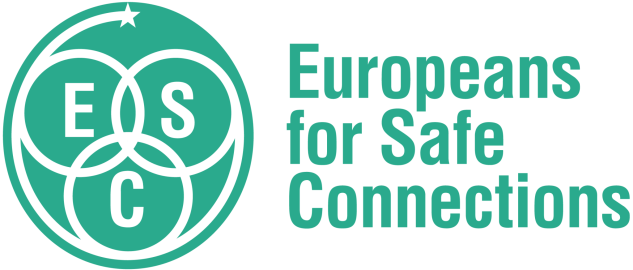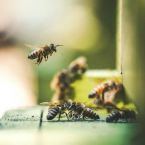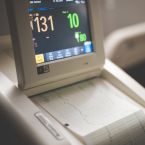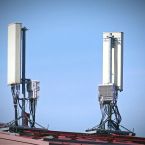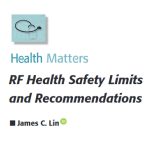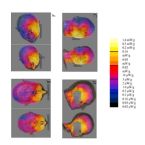Science
15 April 2024
Effect of Mobile Phone Usage During Pregnancy on Total Oxidant and Antioxidant Levels in Cord Blood🔗
A 2023 Turkish clinical study examined the effect of mobile phone use during pregnancy on cord blood levels of oxidants and antioxidants. Given the significant potential for oxidative stress in cord blood, the authors advised that pregnant women should protect themselves and the foetus by minimising exposure to mobile phones.
14 April 2024
A Critical Review of Digital Technology in Education: A Pause for Thought🔗
Professor Tom Butler’s 2024 paper considers objective evidence from peer-reviewed scientific studies in cognitive psychology, neuroscience, and related disciplines, as well as the field of education itself, to review the fundamental problems that beset Digital Technology use in education.
31 March 2024
The effect of 6GHz radiofrequency electromagnetic radiation on rat pain perception🔗
Exposure of rats to 6 GHz RF-EMR delayed pain perception to hot plate and radiant heat stimulation and statistically significantly increased pressure and nociceptive pain, found M. Emre et al (2024). The study points to the need for precautions against possible adverse human health effects from RF-EMR due to the rise of 5G.
31 March 2024
Mobile phone specific radiation disturbs cytokinesis and causes cell death but not acute chromosomal damage in buccal cells: Results of a controlled human intervention study🔗
In Michael Kundi et al.’s (2024) study, participants received UMTS signal doses with a SAR of 0.1-1.6 W/kg via headsets for 2 hours on 5 consecutive days. Buccal mucosa and micronucleated cells collected from both cheeks before and 3 weeks after exposure showed clear evidence of cell cycle disruption and cytotoxicity.
18 March 2024
Detrimental impact of cell phone radiation on sperm DNA integrity🔗
A 2023 Iranian study concluded that the radiation from mobile phones can cause reduced motility, morphological changes, acrosome disorders, and ultimately, damage to the nucleus and the genetic material due to oxidative stress. The sperm genome damage can lead to infertility and endanger the reproductive health of offspring.
17 March 2024
Applying the Precautionary Principle to Wireless Technology: Policy Dilemmas and Systemic Risks🔗
Research shows that microwave radiation has many adverse health effects at levels of everyday use by children and adults, including cancer and neurological disorders. Scientists argue it is far past time to set safe exposure levels and apply the precautionary principle to protect children, pregnant women, adults.
15 February 2024
Case studies show 5G is a health danger🔗
During 2023 and January 2024, seven case studies have been published in scientific journals on the health effects of exposure to real 5G radiation from base stations. The studies, probably the first in the world to study the health impacts of real 5G exposure, all show that 5G is harmful to human health.
6 February 2024
Extremely low frequency magnetic fields emitted by cell phones🔗
A 2023 Slovakian study found that mobile phones expose significant parts of the human head and other parts of the body to extremely low frequency magnetic fields (ELF MF). The measured and simulated ELF MF values were comparable to those reported to induce biological and health effects, including those related to carcinogenesis.
24 January 2024
Effects of 700 and 3500 MHz 5G radiofrequency exposure on developing zebrafish embryos🔗
Study published in Science of the Total Environment by Monica Torres-Ruiz et al., (2024) found the RFR exposure led to “specific organ morphological effects, and behavioral effects in activity, anxiety-like behavior, and habituation that lasted in larvae exposed during the early embryonic period.”
24 January 2024
Genetic profiling of rat gliomas and cardiac schwannomas from life-time radiofrequency radiation exposure🔗
Study found that gliomas and cardiac schwannomas in rats resulting from lifelong exposure to low-dose far-field RFR used in cell phone communications are morphologically similar to low-grade human gliomas, and that ~25% of the mutations seen in these tumours have corresponding alterations in human cancer genes homologs.
1 January 2024
Biological effects of electromagnetic fields on insects: a systematic review and meta-analysis
A 2023 systematic review by A. Thill, M.-C. Cammaerts, A. Balmori summarised the results of studies investigating the toxicity of electromagnetic fields in insects. The review found consistent evidence of harmful effects of LF and RF EMF on insects, based on 119 quality-assessed studies published since 1980.
31 December 2023
Exposure to magnetic fields and childhood leukemia: a systematic review and meta-analysis of case-control and cohort studies🔗
A 2023 Belgian research suggest that ELF-MF higher than 0.4 µT can increase the risk of developing leukemia in children, probably acute lymphoblastic leukemia. Prolonged exposure to electric appliances that generate magnetic fields higher than 0.4 µT like electric blankets is associated with a greater risk of childhood leukemia.
30 December 2023
Exposure to extremely low-frequency magnetic fields and childhood cancer: A systematic review and meta-analysis🔗
A 2021 Korean systematic review and meta-analysis reported that “Statistically significant associations were observed between exposure to ELF-MF and childhood leukaemia. Furthermore, the intensity of the association between exposure to ELF-MFs and childhood leukemia was high, as indicated by the dose–response effect.”
29 December 2023
Electromagnetic Fields – Do They Pose a Cardiovascular Risk?🔗
Slovakian 2023 study revealed discrete abnormalities of complex cardiac autonomic regulation indexed by HRV measures dependent on the effects of 4G and Wi-Fi networks. It seems that direct exposure to high radiofrequency EMF may be associated with a higher risk of cardiovascular complications already in healthy youth.
15 December 2023
Effects of mobile phone electromagnetic fields on brain waves in healthy volunteers🔗
A Dutch scientific study provides compelling statistical evidence for the occurrence of increased alpha wave activity in the brain when participants in the research were exposed to mobile phone signals.
15 December 2023
Mobile Phone Use and Risks of Overall and 25 Site-specific Cancers: A Prospective Study from the UK Biobank Study🔗
The results of the study showed that mobile phone use was significantly associated with a higher risk of incident overall cancer and highlighted the importance of limiting mobile phone use or keeping a distance from mobile phones for the primary prevention of non-melanoma skin, urinary tract, prostate and vulvar cancer.
15 December 2023
Electromagnetic Field Exposure and Abortion in Pregnant Women: A Systematic Review and Meta-Analysis🔗
The results of this study should raise increased awareness among healthcare providers such as gynaecologists and midwives about the harmful effects of electromagnetic waves from electrical appliances, mobile phones and the wireless internet on pregnancy and reduce the risk of spontaneous abortions.
11 December 2023
Family with three children got microwave syndrome near 5G mast🔗
A new case study on the health effects of 5G exposure shows that an whole family of two adults and three young children suffered symptoms of microwave syndrome while on holiday near a 5G mast. After returning home, where radiation levels were significantly lower, the symptoms disappeared and the family’s health recovered.
29 November 2023
New study: Biological effects of electromagnetic fields on insects🔗
Worldwide, insects are declining at an alarming rate. Among other causes, the use of pesticides and modern agricultural practices play a major role in this. Existing research indicates another factor also: the increasingly frequent use of electromagnetic fields (EMF) from man-made technologies.
24 October 2023
Critical Review of SCHEER Opinion
The very productive Swedish/Danish team has produced an updated version of their Critical Review of SCHEER Opinion.
14 October 2023
Critical comment on the Gigabit Infrastructure Act (GIA) for the deployment of 5G millimeter wave technology🔗
In their letter, Rainer Nyberg and Lennart Hardell illustrate how the GIA proposal violates several EU laws and puts human health and the environment at risk by deploying 5G across the board, including millimetre waves, without safety tests and a proper impact assessment.
12 October 2023
Critical comment on the SCHEER final opinion that recommends that EU adopts ICNIRP 2020 guidelines🔗
The letter by Rainer Nyberg and Lennart Hardell explains why SCHEER’s position is indeed a minority opinion and highlights the need for a complete reassessment of the present health safety standards by independent scientists without conflicts of interest.
9 October 2023
Weak Radiofrequency Field Effects on Chemical Parameters That Characterize Oxidative Stress in Human Fibrosarcoma and Fibroblast Cells🔗
Experimental data in this show that RF fields between 3 and 5 MHz were able to change the modulation of mitochondrial signaling by changing the cell growth, mitochondrial mass, and oxidative stress. Exposure to RF fields at 4.2 MHz significantly increased the mitochondrial mass and oxidative stress in fibrosarcoma cells.
30 September 2023
5G Radiofrequency radiation caused the microwave syndrome in a family living close to the base stations 🔗
Fourth case study on health impact from 5G real exposure by Mona Nilsson and Dr Lennart Hardell. Two 5G base stations at distances of 50 and 70 metres caused very high levels of radio frequency radiation in the apartment where the persons in this study live. The family members experienced various health symptoms that were inc…
28 August 2023
New science review of EMF limits by James C. Lin🔗
The review from James C. Lin concludes that many of the recommended limits are debatable and require more scientific justification from the standpoint of safety and public health protection. It also mentioned that the institutional guidelines do not sufficiently reflect the conclusions of science organisations such as IARC.
27 August 2023
The European Union assessments of radiofrequency radiation health risks – another hard nut to crack (Review)🔗
In 2017 an article was published on the lack of WHO willingness to acknowledge health effects from use of wireless phones. It was stated that WHO is a hard nut to crack. This statement now seems to be true for the EU, that is following in the blind man’s footsteps created by the WHO.
15 August 2023
Electromagnetic Fields of Wireless Communications: Biological and Health Effects
This 2023 book reflects contributions from experts in physics, biology, pathology, epidemiology related to the biological and health effects of Radio Frequency/Microwave and Extremely Low Frequency Electromagnetic Fields used in wireless communications and other technological applications.
14 August 2023
On the Clear Evidence of the Risks to Children from Non-Ionizing Radio Frequency Radiation: The Case of Digital Technologies in the Home, Classroom and Society
This research paper by Professor T. Butler aims to inform, through a balanced and objective presentation of scientific research results, about the risks of low-intensity RFR to children’s health. Parents, educators and governments should be concerned, informed and take immediate and appropriate action.
31 July 2023
5G may reduce bone strength🔗
A new study shows that exposure to 3.5 GHz used in 5G reduces bone strength and flexibility in animal experiments, even though the exposure was well below the ICNIRP limits that are claimed to protect against all health risks.
28 July 2023
The EU Commission selected biased experts for radiation report🔗
Serious criticism has emerged from an in-depth review of the European Commission’s latest expert report on the health risks of the radiation emitted by wireless technologies. The EU experts are biased and the report seems to be predetermined to dismiss health risks and give the go-ahead to adopt the new ICNIRP limits from 2020.
21 July 2023
5G base station at 60 meter’s distance caused very high microwave exposure and the microwave syndrome in a 52 year old woman🔗
A third case study on the health effects of real-life 5G exposure by Dr. Lennart Hardell and Mona Nilsson. It confirms their previous publications on microwave syndrome caused by radiofrequency emissions from 5G base stations.
15 July 2023
Wireless technologies, non-ionizing electromagnetic fields and children: Identifying and reducing health risks🔗
Modern telecommunications have been embraced for their innumerable benefits to society, but we have been slower to acknowledge the need to avoid and reduce harms to youngsters or to the natural world on which our lives depend.


